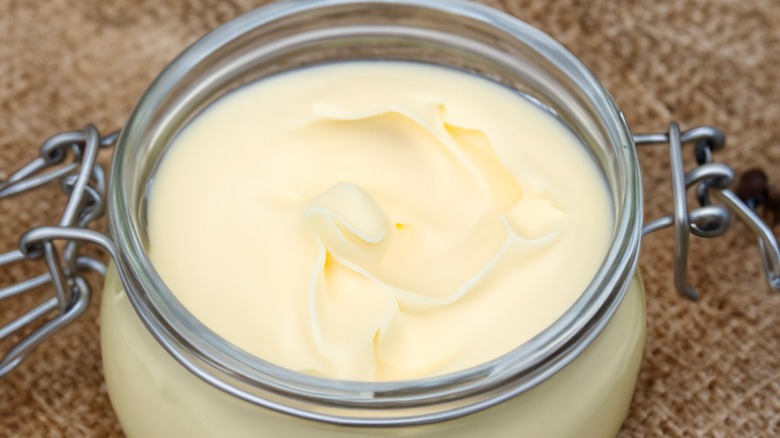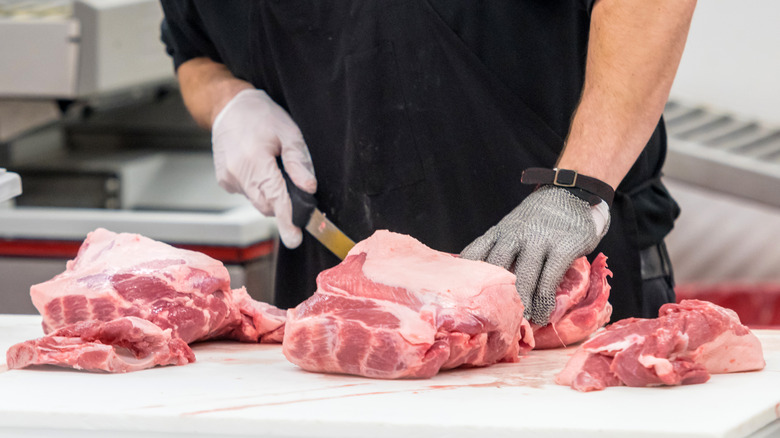The Best Method To Extract Beef Tallow From Meat
If your knowledge of beef tallow is limited to the oft-circulated story that it once graced the fryers of McDonald's and made the french fries golden, rich, and delicious with a savory note, then you're forgiven. While this is true, beef tallow is not among the better-known or used cooking fats. Olive oil, butter, and vegetable oil are frequently called for in recipes, and, among animal-derived fats, pork lard and even bacon fat get more play. This is a shame, as beef tallow is an excellent fat for applications ranging from deep-frying and using in place of cooking oils to adding an unexpected boost of flavor in pot pies. But how do you extract beef tallow anyway?
While processed beef tallow is available commercially, it is quite simple to produce at home with the right know-how and ingredients on hand. Tasting Table recently spoke with celebrity chef David Burke, who is a featured chef at this year's Flavors of the Open presented by DOBEL before the U.S. Open, about what tallow is exactly and how to make it. "Since beef tallow is beef fat that has been rendered, it's a simple matter of cutting off the excess from primary cuts and then chopping it to prepare for rendering," explains Burke. "Technically, before it's rendered it is suet."
Extracting beef tallow is a slow but simple process
To offer a little more insight, what David Burke is saying is that you need some large cuts of beef if you want to make a significant amount of beef tallow. As a professional chef, he has access to primal cuts — those bigger ones that are broken down into portion cuts for steaks and roasts. While the smaller cuts have fat that can be trimmed if desired, note that you are robbing them of fat and flavor. Better to rely on the fat that is generally already trimmed from larger cuts, which can be obtained by buying a more sizable, fattier cut or asking a butcher to save some trimmings for you.
From there, cut away as much excess meat and other tissue that is still attached to the fat. The fat should then be chopped into relatively uniform pieces so that it melts evenly. Place these pieces into a pan over moderately low heat or place it in a low oven with a bit of water and allow the fat to slowly melt into liquid tallow. There will likely be some solid bits, but worry not, as those can be skimmed off with a fine mesh spider, or you can carefully strain the vat. Your beef tallow can be used straight away for any number of uses or allowed to cool and stored in the refrigerator for later use.

